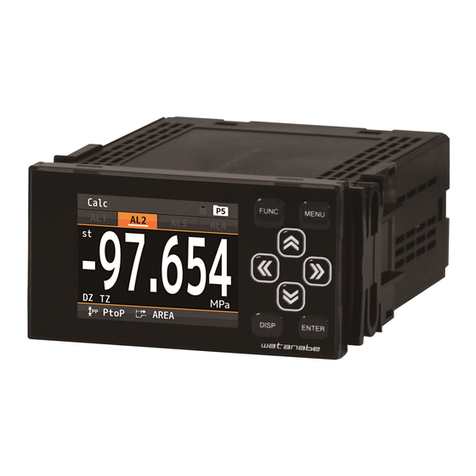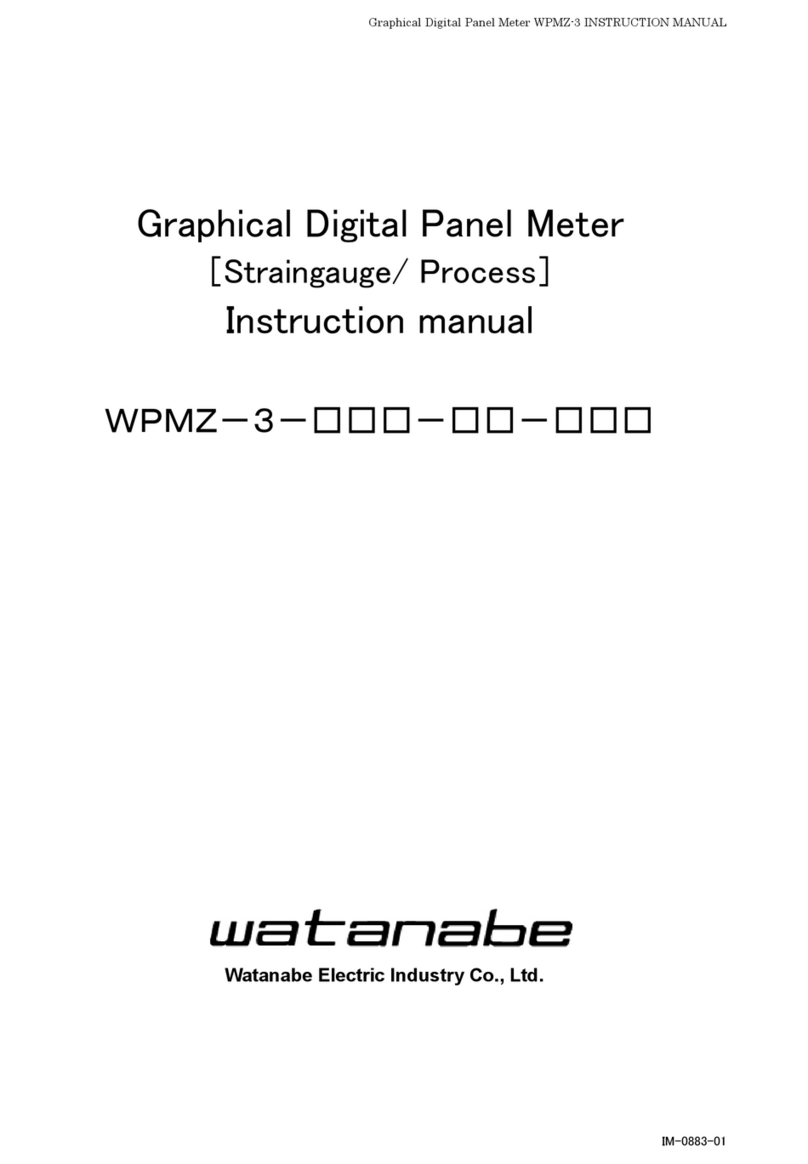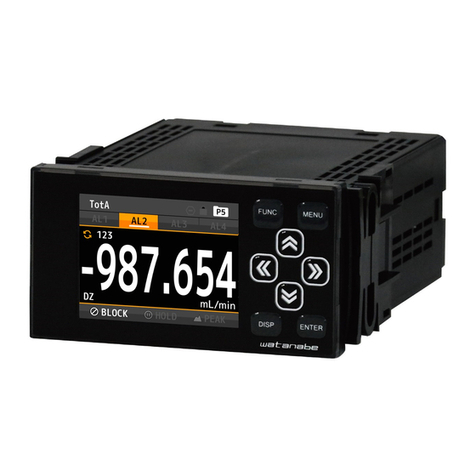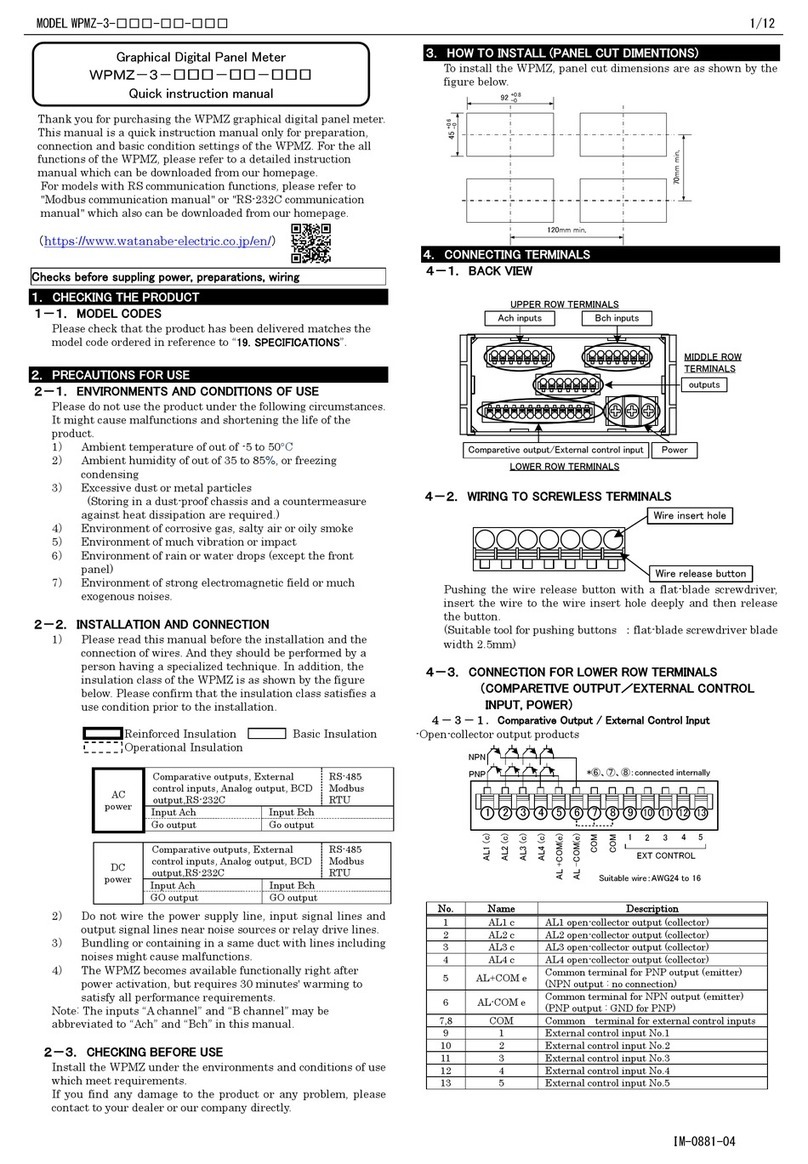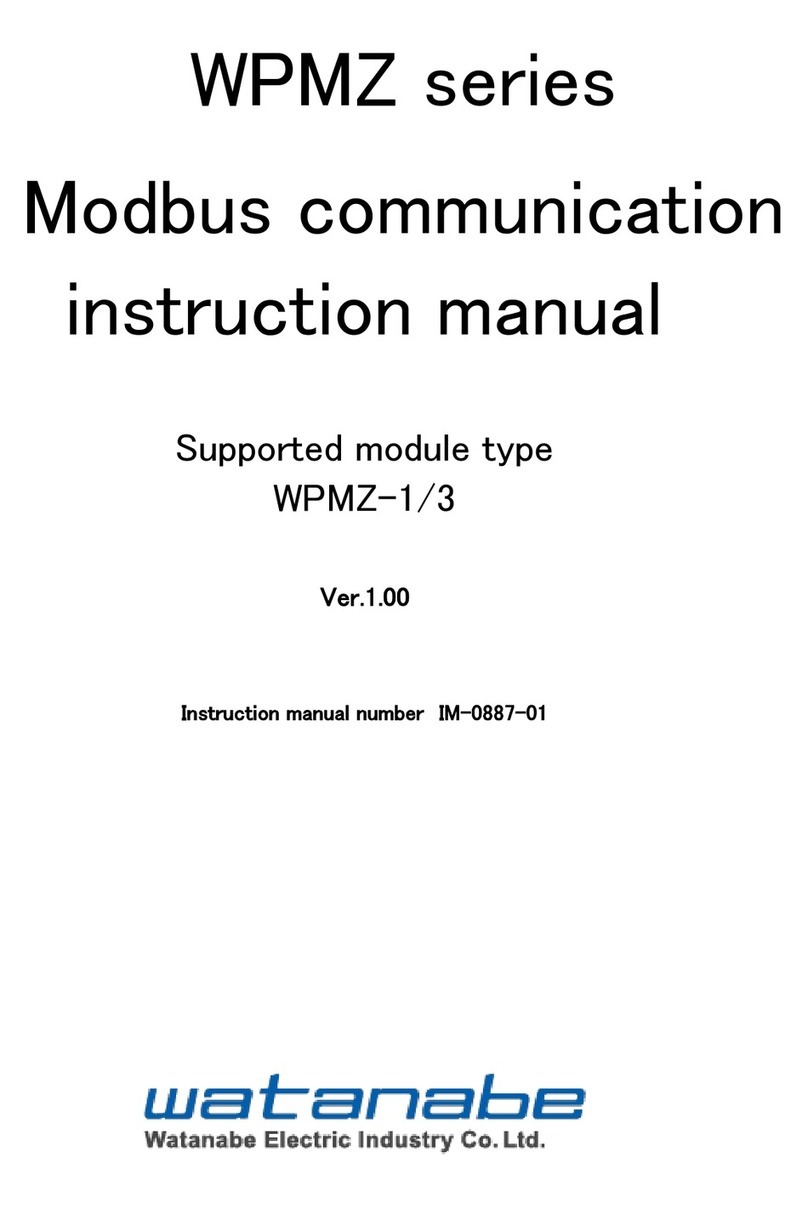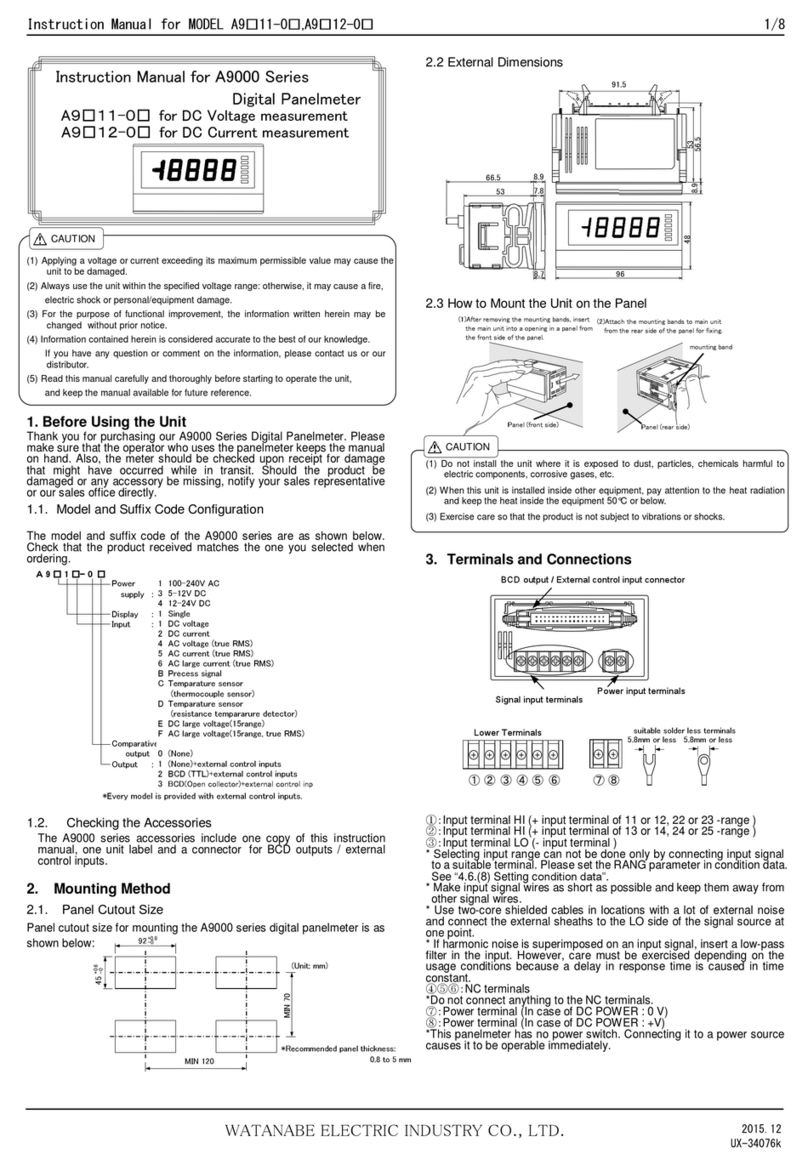5.4.5 Method of Setting Linearization Data
The linearization function means a function that changes the slope of straight
lines in the relationship between the input and indication by correcting the
relations at arbitrary points. Linearization data are set using the input value
(indicated value before correction) and the output value (indicated value after
correction) at each arbitrary point.
Note: The setup conditions are N-1 < N-2 … N-15 < N-16.
6.Control Functions
6.1 Hold Function
The Hold function temporarily retains the indication. The hold function is
enabled by shortcircuiting the HOLD and COM terminals or setting both
terminals to the same voltage level. As a result the display unit retains the
indication given at that moment.
6.2 Digital Zero Function
The Digital Zero function zeros the indication given at an arbitrary timing.
Thereafter, the function shows the amount of change from the point of zeroing.
However, this function serves as an indication resetting function for a frequency
measuring unit. Thus, the Digital Zero function can be used to reset the
indication when there is no input signal at all.
Note that, the on/off control of the Digital Zero function can be achieved by
means of terminal control or front panel keys. In the case of terminal control,
the Digital Zero function is turned on by shortcircuiting the DZ and COM
terminals or setting both terminals to the same voltage level. The indication at
that moment is zeroed. In the case of control with the front panel keys, hold
down the Mode key and press the Increment key for about 1 second to zero the
indication at that moment.
Note: Operation with the control terminals takes priority over operation with
the front panel keys. The Digital Zero function is disabled if the
control terminals are made to go through the off-on-off sequence with
the function enabled by means of the front panel keys.
6.3 Peak Hold Function
The Peak Hold function retains one of the maximum (peak hold)/minimum
(valley hold)/maximum - minimum (peak-valley hold) values and provides output
for that value. Selection from these values is made using the condition data.
The peak hold function is enabled by shortcircuiting the PH and COM terminals
or setting both terminals to the same voltage level.
7.Output Function
7.1 Comparison Output Function
The A5000 series of unit meters is designed so that the two judgment values HI
and LO can be set for the measured (indicated) value to provide the results of
judgment as relay contact output. (This function is effective when the meter is
equipped with a comparison output unit.) For details on the contact ratings and
other specifications, refer to the section “Output Specifications.”
7.2 Analog Output Function
The A5000 series of unit meters can output an analog signal for an indicated
value (when the meter is equipped with an analog output unit). There are four
output ranges, 0 to 1 V/0 to 10 V/1 to 5 V/4 to 20 mA, from which a selection can
be made using the condition data. In addition, the analog output of the A5000
series allows for arbitrary output scaling. This scaling can be achieved by
setting the indication value for an output of the maximum scale value (20 mA for
4–20 mA output range) in the AOHI parameter of the scaling data.
7.3 RS-485 Interface Function
The A5000 series can be equipped with an RS-485 interface (when the meter is
provided with an RS-485 unit). For details on the RS-485 function, see the
separate manual on communication functions.
7.4 RS-232C Interface Function
The A5000 series can be equipped with an RS-232C interface (when the meter is
provided with an RS-232C unit). For details on the RS-232C function, see the
separate manual on communication functions.
8.Specifications and External Dimensions
8.1 Input Specifications
8.1.1 DC Voltage Measuring Unit (range 11)
8.1.2 DC Voltage Measuring Unit (ranges 12 to 15)
8.1.3 DC Current Measuring Unit
(1) Press the Mode key and the Enter key during
measurement.
(2) Press the Shift key a few times to move to the
linearization data menu.
(4) Press the Shift key (change digit) and the
Increment key (change numeric value) and then
press the Mode Key to after the number of data to be
corrected has been set.
&
Note: The decimal point in the selected digit
flashes.
(3) Press the Mode key to move to the setup for the
number of data to be corrected.
&
(10) When all the settings have been made, press the
Enter key to return to the measurement mode.
(8) Press the Mode key to display the setup for output
values of the data to be corrected.
Note: For a single display unit, the unit
automatically returns to N-01 indication if there is
no key operation for about 8 seconds. In this
case, press the Mode key to return to the numeric
value indication.
&
(5) For a single display unit, press the Mode key to
change to the parameter information indication.
(6) Press the Shift key (change digit) and Increment
key (change numeric value) and then press the Mode
key after the N-01 input value has been set.
RE
Note: For a single display unit, RE flashes when
the input value is set and DZ flashes when the
output value is set.
DZ
&(7) Press the Shift key (change digit) and Increment
key (change numeric value) and then press the Mode
key after the N-01 output value has been set.
RE
Note: For a single display unit, the unit is
automatically returned to N-02 indication if there is
no key operation for about 8 seconds. In this
case, press the Mode key to return to the numeric
value indication.
(9) Press the Shift key (change digit) and Increment
key (change numeric value) and then press the Mode
key after the N-02 input value has been set.
Repeat steps (5) to (9) until all the settings have
been made.
Multi-display unit Single display unit
